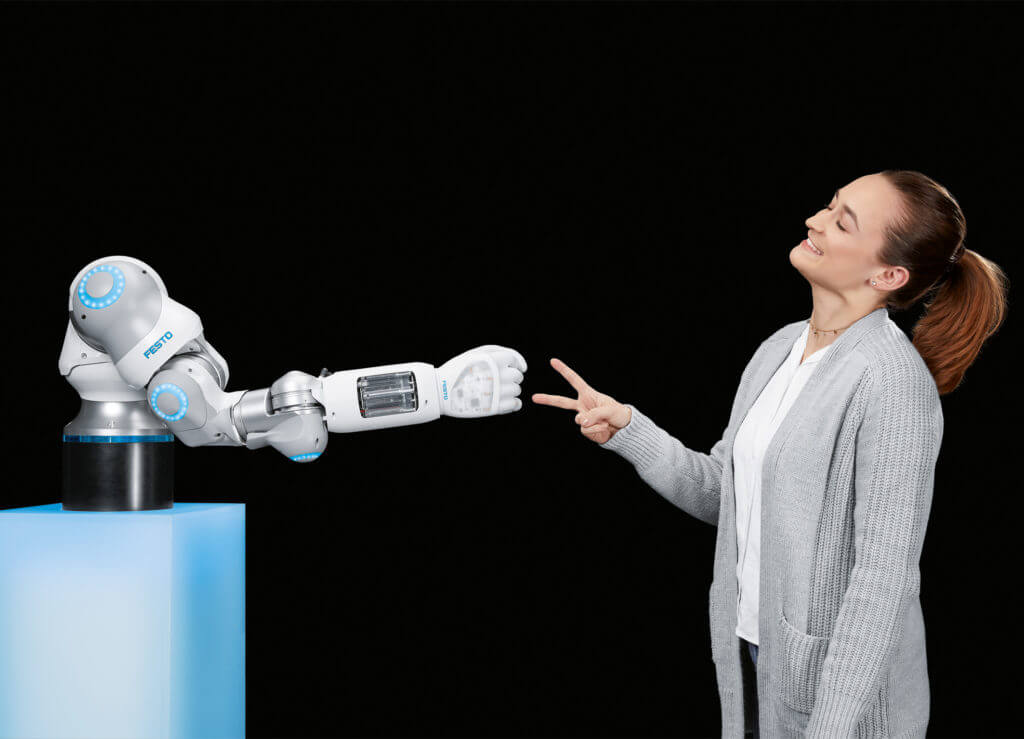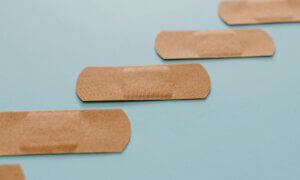Although soft robotics is relatively new, scientists have already broken boundaries. Their soft robotics designs could transform the field forever and advance various industries.
1. Sweating Hand
While a sweaty mechanical hand may not be what you picture when you imagine potentially groundbreaking soft robotics designs, it is an incredibly promising breakthrough in the sector. Its creators hope it will kickstart a new cooling technology to reduce equipment overheating.
The robot’s creators attempted to replicate how people regulate their temperature because nature heavily inspired them. Basically, water passes through the fingers’ porous hydrogel layers and chills the system before evaporating. Its cooling capacity — 107 watts per kilogram — is over three times higher than that of humans.
2. Pneumatic Grippers
Although grippers were among the first soft robotics designs people made, they still have plenty of room for improvement. For instance, conventional models have a limited range of motion because they use fixed actuators. One research team deviated from the norm and broke boundaries with their variable structure pneumatic creation.
A bionic pneumatic arm presented by Festo in 2019
Pneumatics changes pressure to leverage force — similar to how a muscle flexes — instead of relying on electric motors. It has many other benefits, too. For instance, a pneumatic arm can withstand temperatures down to minus 40 degrees Fahrenheit and up to 248 degrees Fahrenheit. These traits dramatically increase its success rate and broaden its applications.
Since the robot’s actuators are pneumatic and rotate independently, the soft gripper can handle all sorts of objects. For example, it successfully held a hammer, pillow, calculator and weight. Its flexibility lets it grasp from the best position — unlike traditional metal robotics designs, which can only open and close.
3. Knitted Wearable
Researchers from the Massachusetts Institute of Technology developed a computer-aided knitting process — PneuAct — to create soft pneumatic actuators. They simply plug their pattern into their machine and it prints a robot. The result is a glove-like assistive device that uses compressed air to grasp objects.
Although there are many groundbreaking prosthetics and assistive devices, this novel approach is the first of its kind. They fabricate the pneumatic actuators with a conductive yarn, making it possible for the robot to respond to stimuli. Unlike similar soft robotics designs, it can “feel” whatever it’s grabbing to give the user substantial grip strength. Most importantly, it can sense human touch.
This is a unique advancement in soft robotics because it improves conventional designs in multiple ways. Since its production relies on an autonomous digital process and pre-programmed patterns, it has astounding potential in rehabilitation fields. People could create custom, low-cost prosthetics with only a three-dimensional printer and the PneuAct program.
4. Exploding Bug
While batteries are fantastic, lightweight power sources, they contain up to 50 times less energy by volume than alternative fuels. Since they need more space to provide enough of a charge, they’re not great choices for small-scale designs. Researchers from Cornell wanted a solution, so they turned to soft robotics and ended up creating an exploding insect.
Instead of batteries, it runs on a miniature combustion engine. A tiny spark ignites a methane and oxygen mixture, catapulting it forward. Despite the destructive nature of this function, the robot lasts for over 750,000 cycles. It’s among the most innovative soft robotics designs because it provides a proof-of-concept for an effective alternative to traditional power sources.
5. Self-Growing Soft Robot
Researchers from the University of Minnesota took inspiration from fungi and engineered something capable of growing itself. The task sounds impossible, but they found a way using pressure and heat. This kind of soft robotics design is the first of its kind, so it’s a proof-of-concept.
It uses a combination of ultraviolet light and resin to secrete material for its body through extrusion by self-lubricated interface photopolymerization. The researchers call the process E-SLIP for short. Astoundingly, it can grow at a rate of 12 centimeters per minute and reach up to 1.5 meters long. Since no one has successfully engineered this kind of creation before, there’s no telling how much future innovations could improve it.
Its unique extrusion process paves the way for researchers to build creations capable of withstanding extreme environments. For example, you could put a self-growing robot in an emergency like a hurricane or a flood. You could even install it on a manufacturing facility’s conveyor belt to replace expensive machinery and reduce the company’s maintenance costs.
Also read: Is the Rise of Electric Vehicles Sparking a New Manufacturing Revolution?
6. Brainless Soft Robot
The same researchers who built an autonomous maze-navigating creation have now made a brainless soft robot. Its modern metal counterparts often rely on human or computer input — it needs neither. Instead, it turns dynamically on its own with physical intelligence. Basically, its structure allows it to twist, roll and overcome obstacles by itself.
This soft robot simply looks like a tiny piece of rope. Its body is made of liquid crystalline elastomer — a material capable of moving objects 2,500 times heavier than itself — twisted into an asymmetrical shape. Since it contracts and expands when exposed to heat, it rolls around the maze. If it gets stuck, it simply wiggles out and continues on its way.
While a small rope-like robot may not seem groundbreaking to you at first, it’s breaking boundaries in the field. Since it functions because of warmth, the researchers want to take advantage of this unique feature to develop new soft robotics designs capable of utilizing heat from their environment. Couple that with the material’s unparalleled strength and you have endless possibilities.
7. Octopus Grippers
Scientists from the University of Illinois Urbana-Champaign came up with the novel idea to make conventional grippers into octopus-like appendages. The unique thing about an octopus is that it has three internal muscle groups for maximum agility and control. Since the purpose of the standard soft robotics design is to grasp and hold irregular objects, it’s an ideal approach.
They take advantage of an energy-shaping method to give the soft robot the ability to manipulate. The arms’ separate actuators use the stored power for independent and flexible motion. Its unique muscle-like structure and internal components give it a much larger range of motion than conventional types have.
A gripper can typically only pick up objects directly below itself. With this octopus-inspired build, the scientists hope to break out of those boundaries to allow a three-dimensional range of motion. Since this is the first of its kind, it could substantially impact the field. If others can replicate and improve their design, it could change this kind of soft robot forever.
The Power of Innovation
Many of these soft robotics designs are the first of their kind. Whether their creators looked to nature or simply tried to improve upon their first iteration, they ended up with revolutionary creations. These advances could impact industries like health care and manufacturing forever.
Article contributed by Emily Newton.About the author: Emily Newton is the Editor-In-Chief of Revolutionized, a magazine exploring innovations in science and industry that shares ideas to promote a better tomorrow. She enjoys writing and researching about how technology is changing the world.
Follow TechTheLead on Google News to get the news first.























